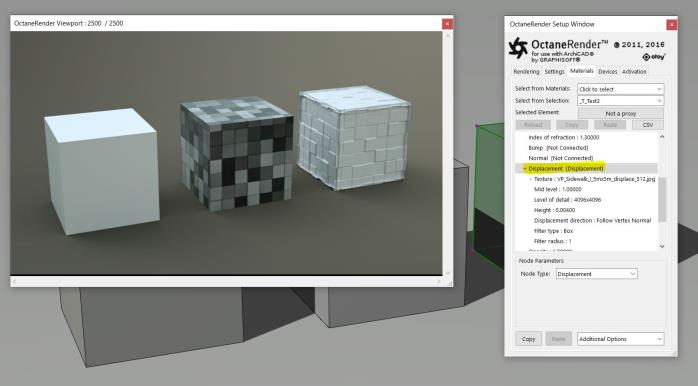
Figure 1: The first cube has a white diffuse color, the second cube has the greyscale image as a diffuse to show what image is used for displacement of the third cube.
The DisplacementThe process of utilizing a 2D texture map to generate 3D surface relief. As opposed to bump and normal mapping, Displacement mapping does not only provide the illusion of depth but it effectively displaces the actual geometric position of points over the textured surface. node is not connected by default. To connect a Displacement Node, change the Displacement pin type to Displacement then assign a Greyscale Image node to the Texture pin and load the displacement map. Use caution when setting the displacement amount since high amounts may cause a video card error. It is highly recommended to use 16 bit displacement maps since 8 bit maps do not provide the granularity required for high quality renders.
NOTE: You may need to adjust the ‘Kernel → Ray Epsilon’ to ensure there is no self-shadowing from displacement geometry.

Figure 1: The first cube has a white diffuse color, the second cube has the greyscale image as a diffuse to show what image is used for displacement of the third cube.
Displacement Parameters
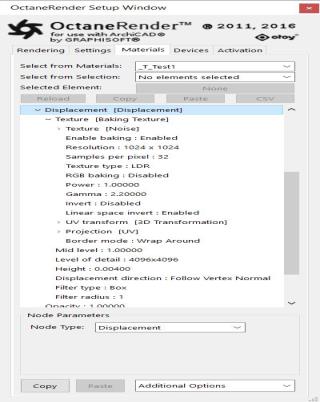 ← Parameters using Noise Texture for displacement.
← Parameters using Noise Texture for displacement.
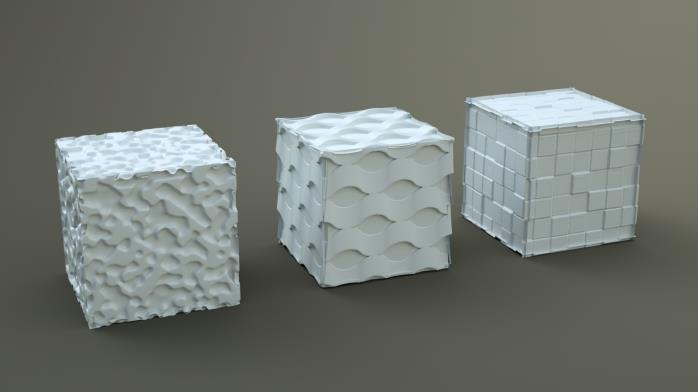
Figure 2: For displacement the first cube has a Noise Texture and the other cubes have Greyscale Image TexturesTextures are used to add details to a surface. Textures can be procedural or imported raster files. used.
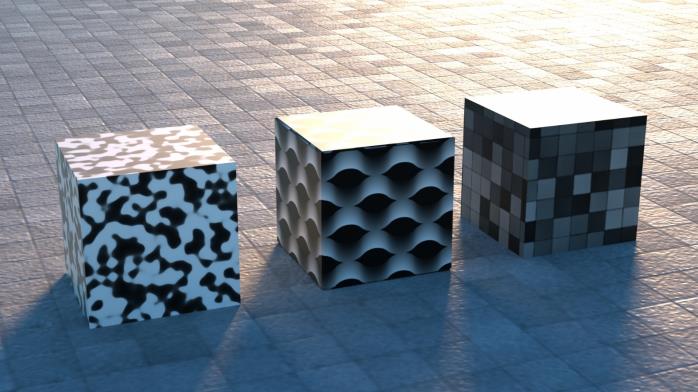
Figure 3: These cubes have a greyscale image for diffuse to show the images used for Displacement in the next figure. The Ground material has images for DiffuseAmount of diffusion, or the reflection of light photons at different angles from an uneven or granular surface. Used for dull, non-reflecting materials or mesh emitters., Bump, and SpecularAmount of specular reflection, or the mirror-like reflection of light photons at the same angle. Used for transparent materials such as glass and water..
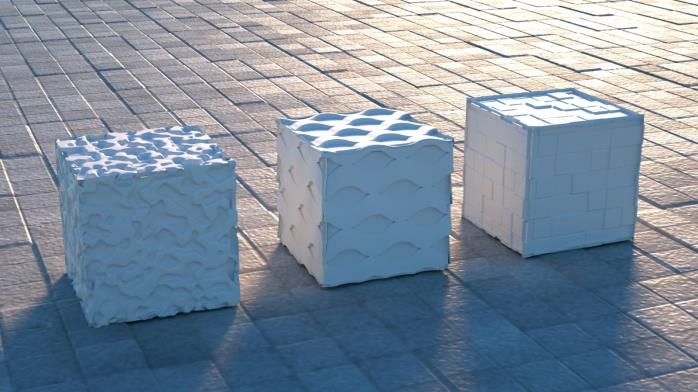
Figure 4: These cubes have a greyscale image (shown in Figure 3) used for Displacement. The Ground material is the same as shown in Figure 3 and now a greyscale image is used for Displacement.
Tip: You can potentially reduce artefacts by increasing the "Level of Detail" and by using the "Displacement Direction" and "Filter Type" and "Radius". You will need to experiment, but Follow Smoothed Normal might seem best with a Gaussian filter.